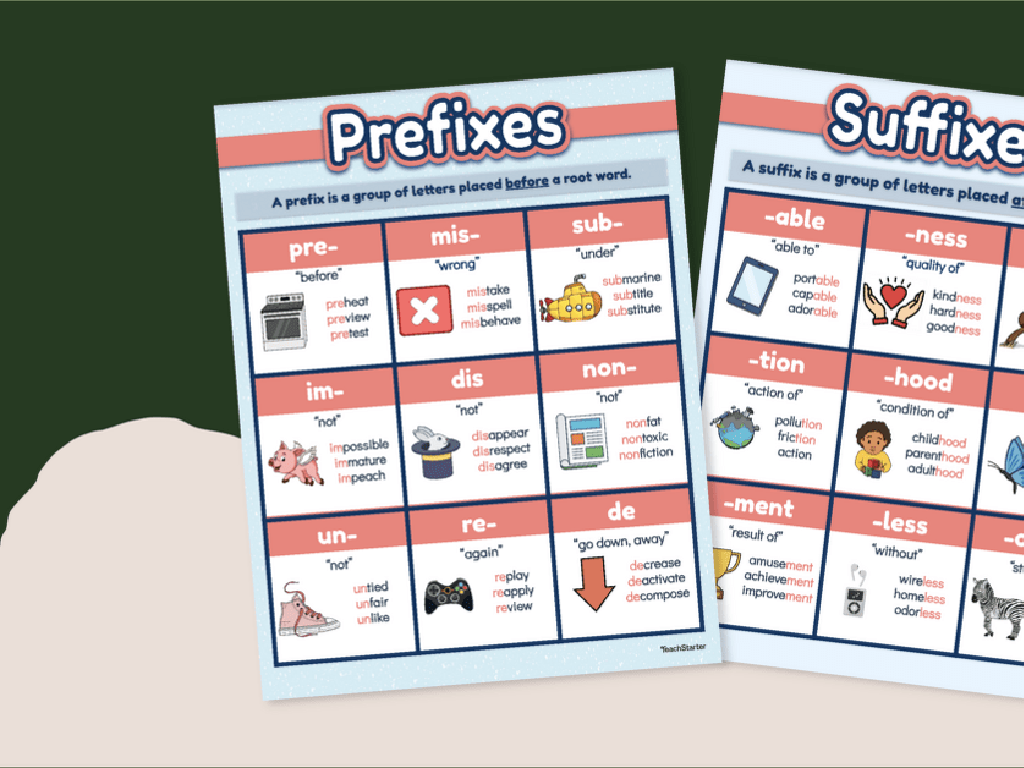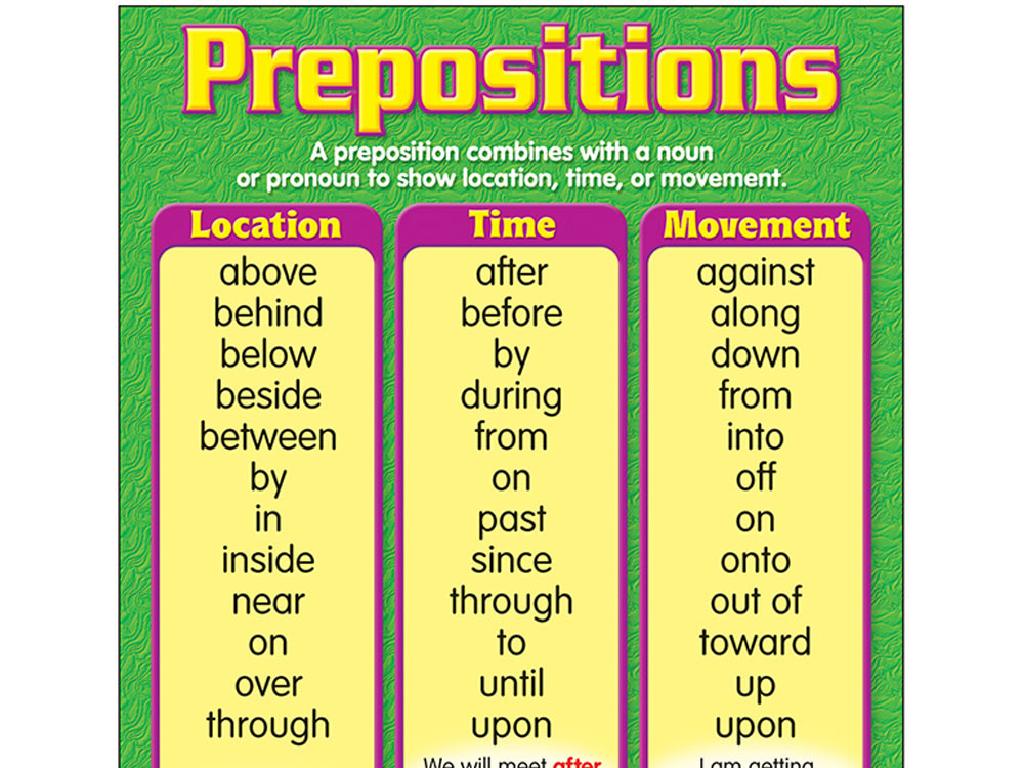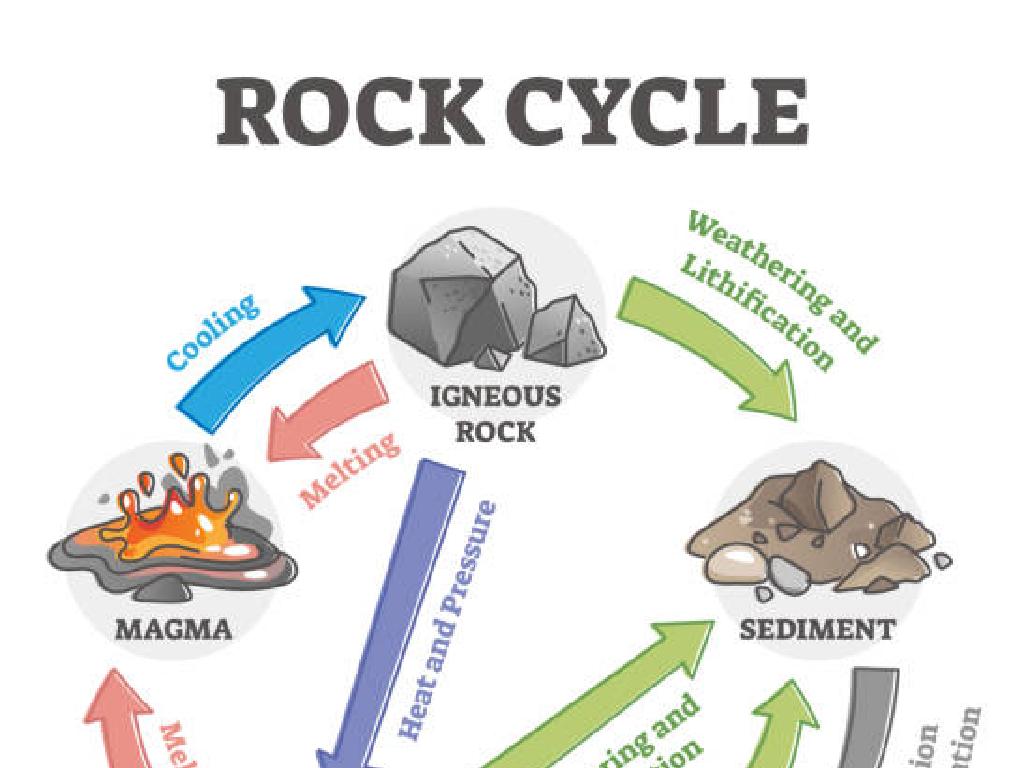Animal Adaptations: Feet And Limbs
Subject: Science
Grade: Third grade
Topic: Adaptations
Please LOG IN to download the presentation. Access is available to registered users only.
View More Content
Exploring Animal Adaptations: Feet and Limbs
– Animals adapt to their environments
– Special features: feet and limbs
– Feet and limbs are adapted for different tasks like running, swimming, or climbing
– Types of feet and limbs
– Webbed feet, sharp claws, long legs, etc.
– How they help animals survive
– These adaptations help animals find food, escape predators, and move in their habitat
|
This slide introduces the concept of animal adaptations, specifically focusing on feet and limbs. Start by explaining adaptation as a way animals change over time to live better in their environments. Highlight the importance of feet and limbs, which can be adapted for various functions such as running fast to escape predators, swimming efficiently, or climbing trees for food or safety. Show examples of different types of feet and limbs, like the webbed feet of ducks for swimming, the sharp claws of eagles for catching prey, and the long legs of giraffes for reaching high leaves. Encourage students to think about why certain animals have specific types of feet and limbs and how these features help them survive in their unique habitats.
Exploring Animal Adaptations: Feet and Limbs
– Adaptations help survival
– Special features that plants or animals have to live in different places.
– Body parts like feet and limbs
– Different animals have different kinds of feet and limbs to help them move.
– Behaviors for living
– How animals act to stay safe, find food, and take care of their babies.
– Examples: webbed feet, sharp claws
– Ducks have webbed feet to swim, monkeys have sharp claws to climb trees.
|
This slide introduces the concept of adaptations, which are special characteristics that help animals and plants survive in their environments. Emphasize that adaptations can be physical, like the shape of an animal’s feet or limbs, or behavioral, like the way an animal behaves to stay safe or find food. Use examples that are relatable to third graders, such as ducks using their webbed feet to swim efficiently in water, or monkeys using their sharp claws to climb trees. Encourage students to think of other examples and to observe how different animals move in their habitats.
Exploring Feet Adaptations in Animals
– Why animals have different feet
– Ducks: webbed feet for swimming
– Webbed feet help ducks push water and swim efficiently
– Cheetahs: hard pads for speed
– Cheetahs’ pads provide traction for high-speed chases
– Examining diverse feet adaptations
|
This slide introduces students to the concept of adaptations in animal feet and limbs, emphasizing the relationship between an animal’s habitat and its movement. Explain that adaptations are special features that allow animals to survive in their environments. Use the examples of ducks and cheetahs to illustrate how different types of feet serve various purposes: webbed feet for swimming in water and hard pads for running quickly on land. Encourage students to think of other animals and how their feet are adapted to their lifestyles. This will help them understand the concept of adaptation and its importance in the animal kingdom.
Animal Limbs and Their Uses
– Limbs are legs, arms, wings, flippers
– Used for walking, flying, swimming
– Each limb is adapted for survival
– For example, ducks have webbed feet for swimming
– Examples: ducks, kangaroos, bats
– Kangaroos have strong legs for hopping, bats have wings to fly
|
This slide introduces the concept of animal adaptations, specifically focusing on different types of limbs and their uses. Limbs such as legs, arms, wings, and flippers are crucial for various animal activities including walking, flying, swimming, and digging. Each limb is uniquely adapted to suit the animal’s environment and lifestyle. For instance, ducks have webbed feet which make them excellent swimmers, kangaroos have powerful hind legs adapted for jumping, and bats have wings that enable them to fly. Encourage students to think about how these adaptations help the animals survive and thrive in their habitats. Discuss how the structure of each limb is related to its function.
Adaptations in Action: Amazing Animal Limbs
– Monkeys use tails for balance
– Tails act like an extra limb to hold onto branches.
– Kangaroos jump with large feet
– Big feet for powerful jumps to move or escape predators.
– Birds’ wings have light bones
– Lightweight bones make it easier to lift off and soar.
– Each adaptation has a purpose
|
This slide aims to illustrate how different animals have adapted their feet and limbs for survival. Monkeys have prehensile tails that function as an extra limb, allowing them to balance and maneuver through trees. Kangaroos have developed large feet that act like springs, enabling them to leap great distances to escape danger or travel. Birds have evolved with hollow, lightweight bones in their wings, which aids in flight by reducing the energy required to stay airborne. Discuss with students how these adaptations help the animals in their habitats and encourage them to think of other animals with unique limb adaptations. This will help them understand the concept of natural selection and the role of adaptations in the survival of a species.
Match the Feet to the Habitat
– Play a matching game with animal feet
– Match feet to their habitats
– Consider feet features for environments
– Does the animal have webbed feet for swimming or claws for climbing?
– Review and discuss our matches
|
This interactive game is designed to help students understand the concept of adaptation by matching different types of animal feet to their corresponding habitats. Encourage the students to think about the special features of the feet, such as webbing for swimming or claws for digging, and how these features help the animals survive in their environments. After the activity, review the answers as a class and discuss why each match is correct, reinforcing the concept of adaptation. Possible activities include matching pictures of feet to pictures of habitats, drawing lines to connect them on the board, or using physical cards that students can move around. This will help solidify their understanding of how animals are adapted to their habitats.
Create Your Own Adapted Animal
– Draw an animal with special adaptations
– Choose a habitat for your animal
– Could be a jungle, desert, ocean, or arctic
– Consider habitat challenges
– Think: What makes it hard for animals to live there?
– Share and explain your animal
– Tell us how your animal’s feet and limbs help it in daily life
|
This class activity encourages creativity and application of the concept of animal adaptations to different habitats. Students will draw an animal with feet and limbs adapted to a specific habitat, considering the challenges of that environment. For example, webbed feet for swimming in water, or strong limbs for climbing trees. Provide guidance on how adaptations help animals survive, such as finding food, escaping predators, or moving around. During sharing, prompt students to explain how their adaptations would work. Possible activities: 1) Create a desert creature with wide feet for walking on sand. 2) Design a jungle animal with grippy toes for climbing trees. 3) Invent an arctic animal with furry paws for warmth. 4) Imagine an aquatic animal with flippers for swimming. This will help students understand the relationship between an animal’s physical characteristics and its environment.






